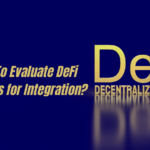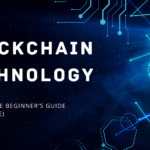As decentralised finance (DeFi) continues to evolve, integrating with other blockchain networks and DeFi protocols has become a critical strategy for expanding an ecosystem, enhancing liquidity, and offering a broader range of financial products to users. For professionals working in the blockchain industry, understanding the intricacies of DeFi integration is essential for driving innovation and maintaining a competitive edge. This guide provides an in-depth analysis of the technical, strategic, and operational aspects of DeFi integration, offering insights into best practices and emerging trends.
What is DeFi Integration?
DeFi integration involves connecting DeFi (decentralised finance) protocols with other blockchain networks or platforms to create an ecosystem where assets, data, and services can interact seamlessly across multiple environments. This integration enables the creation of more sophisticated financial products, enhances liquidity through cross-chain transactions, and encourages greater inclusivity by making financial services accessible to a broader audience.
The rapid growth of DeFi applications, coupled with the increasing demand for interoperability between different blockchain networks, highlights the importance of effective DeFi integration. By leveraging advanced technologies such as cross-chain communication protocols, smart contract interoperability, and decentralised oracles, blockchain platforms can create robust and scalable ecosystems that support a wide range of DeFi use cases.
How does DeFi Integration work?
Successful DeFi integration requires a deep understanding of the underlying technologies and protocols that enable seamless interaction between different blockchain networks. Below are the key technical components that must be considered when planning DeFi integrations.
Cross-Chain Compatibility
Cross-chain compatibility refers to the ability of different blockchain networks to interact with each other, enabling the transfer of assets, data, and smart contracts across chains. Achieving cross-chain compatibility is essential for DeFi integration as it allows for the creation of interconnected ecosystems where users can access a wide range of financial services without being confined to a single blockchain.
Cross-chain communication protocols, such as Polkadot, Cosmos, and Avalanche, are designed to facilitate interoperability between blockchains. These protocols enable the seamless transfer of tokens and data across different networks, creating a more inclusive and versatile DeFi ecosystem.
Smart Contract Interoperability
Smart contract interoperability is an extremely important aspect of DeFi integration, allowing smart contracts on different blockchain networks to interact with each other. This interoperability enables the creation of complex financial products and services that leverage the unique capabilities of multiple blockchains.
To achieve smart contract interoperability, blockchain networks must adopt standardised protocols and interfaces that enable cross-chain communication. For instance, the Ethereum Virtual Machine (EVM) compatibility standard has become widely adopted, allowing smart contracts written for Ethereum to be deployed on other EVM-compatible blockchains.
Token Standards
Token standards define the rules and protocols for creating and managing tokens on a blockchain network. In the context of DeFi integration, adopting standardised token formats is essential for ensuring seamless interaction between different blockchain networks and DeFi protocols.
The most widely used token standards in the DeFi space are ERC-20 for fungible tokens and ERC-721 for non-fungible tokens (NFTs). These standards provide a common framework for creating and transferring tokens across different blockchain networks, facilitating cross-chain DeFi applications.
Oracles and Price Feeds
Oracles are critical components of DeFi integration, providing real-world data to smart contracts on the blockchain. In the DeFi ecosystem, it is common to use oracles to supply price feeds for various assets, enabling the accurate and reliable execution of smart contracts.
Decentralised oracles, such as Chainlink and Band Protocol, are widely used in DeFi applications to provide secure and tamper-proof data feeds. Integrating decentralised oracles with DeFi protocols enhances the security and reliability of financial transactions, making them more resilient to manipulation and fraud.
Liquidity Pools and Automated Market Makers (AMMs)
Liquidity pools and Automated Market Makers (AMMs) are foundational elements of the DeFi ecosystem, enabling decentralised trading and liquidity provision. In the context of DeFi integration, establishing cross-chain liquidity pools allows users to trade assets and provide liquidity across multiple blockchain networks.
AMMs, such as Uniswap and SushiSwap, facilitate decentralised trading by automatically matching buy and sell orders based on predefined algorithms. By integrating AMMs across different blockchain networks, DeFi platforms can enhance liquidity and provide users with access to a broader range of assets and trading pairs.
Governance Mechanisms
Governance mechanisms play a crucial role in DeFi integration, allowing stakeholders to participate in the decision-making process of a protocol. Effective governance models ensure that DeFi platforms remain decentralised, transparent, and responsive to the needs of their communities.
The governance mechanisms, with context to the DeFi integration, must be designed to accommodate cross-chain interactions, allowing stakeholders from different blockchain networks to participate in governance decisions. This can be achieved through the adoption of multi-chain governance frameworks that enable cross-chain voting and decision-making.
Security and Auditing
Security is paramount in DeFi integration, as the interconnected nature of DeFi protocols increases the risk of vulnerabilities and exploits. To mitigate these risks, DeFi platforms must implement robust security measures, including smart contract auditing, formal verification, and continuous monitoring.
Auditing firms such as CertiK, Quantstamp, and ConsenSys Diligence provide comprehensive security assessments of smart contracts and DeFi protocols, identifying potential vulnerabilities and recommending mitigation strategies. Regular security audits and the adoption of best practices in smart contract development are essential for maintaining the integrity and trustworthiness of DeFi integrations.
How to research DeFi Integration? Step-by-Step Research Guide
Conducting thorough research is essential for identifying and evaluating potential DeFi integration opportunities. Now the question arises: what are the key metrics for assessing DeFi integration? To answer that we have the following step-by-step guide provides a structured approach to researching and proposing DeFi protocol integrations and
Step 1: Identifying Potential DeFi Protocols
The first step in researching DeFi integration opportunities is identifying potential DeFi protocols that align with your platform’s goals and objectives. This involves analysing the DeFi landscape to identify protocols with complementary features, such as liquidity pools, AMMs, lending platforms, and governance mechanisms.
When selecting potential DeFi protocols for integration, consider factors such as market capitalization, user adoption, technical compatibility, and community support. Conducting a comprehensive market analysis will help you identify protocols with the greatest potential for creating value through integration.
Step 2: Analysing DeFi Ecosystems and Protocols
Once potential DeFi protocols have been identified, the next step is to analyse their ecosystems and technical capabilities. This involves assessing the protocols’ smart contract architecture, token standards, governance mechanisms, and security features.
In addition to technical analysis, it is important to evaluate the DeFi protocols’ user experience, liquidity, and market dynamics. Understanding how users interact with the protocols and how liquidity is distributed across different assets will provide valuable insights into the potential benefits and challenges of integration.
Step 3: Evaluating Cross-Chain Integration Opportunities
Cross-chain integration is a critical aspect of DeFi research, as it enables the seamless transfer of assets and data between different blockchain networks. Evaluating cross-chain integration opportunities involves assessing the compatibility of the selected DeFi protocols with other blockchain networks and identifying potential cross-chain communication protocols.
When evaluating cross-chain integration opportunities, consider factors such as transaction speed, scalability, security, and interoperability. Selecting the right cross-chain communication protocol will ensure that your DeFi integration is robust, scalable, and capable of supporting a wide range of use cases.
Step 4: Assessing Security Measures and Risk Management
Security is a top priority in DeFi integration, as the interconnected nature of DeFi protocols increases the risk of vulnerabilities and exploits. Assessing the security measures and risk management practices of the selected DeFi protocols is essential for ensuring the integrity and reliability of the integration.
Factors such as smart contract auditing, formal verification, and decentralised governance must be considered when assessing security measures.Implementing robust security measures and risk management practices will help mitigate potential vulnerabilities and protect users from malicious attacks.
Data-Backed Examples and Case Studies
To illustrate the benefits and challenges of DeFi integration let us analyse data-backed examples and case studies of successful integrations as they provide valuable insights into the best practices and strategies for implementing DeFi integrations.
Example 1: Aave and Polygon Integration
Aave, a leading DeFi lending protocol, successfully integrated with Polygon, a layer-2 scaling solution for Ethereum. This integration enabled Aave to offer faster and cheaper transactions to its users, enhancing the overall user experience and attracting a larger user base.
The Aave-Polygon integration is a prime example of how cross-chain compatibility and smart contract interoperability can enhance the scalability and efficiency of DeFi platforms. By leveraging Polygon’s layer-2 solution, Aave was able to significantly reduce transaction fees and improve the accessibility of its lending services.
Example 2: Uniswap and Arbitrum Integration
Uniswap, a decentralised exchange (DEX) and AMM, integrated with Arbitrum, an Ethereum layer-2 scaling solution. This integration allowed Uniswap to offer faster and more cost-effective trading services to its users, addressing the scalability challenges associated with the Ethereum network.
The Uniswap-Arbitrum integration highlights the importance of scalability solutions in DeFi integration. By adopting layer-2 solutions, DeFi platforms can overcome the limitations of existing blockchain networks and provide a more efficient and user-friendly experience.
What are the Strategic Considerations for DeFi Integration?
Beyond the technical aspects, there are several strategic considerations that must be taken into account when planning DeFi integrations. These considerations will help ensure that the integration is aligned with the platform’s long-term goals and objectives.
Financial Inclusion and User Experience
One of the key benefits of DeFi integration is the potential to enhance financial inclusion by making financial services more accessible to underserved populations. By integrating with other blockchain networks and DeFi protocols, platforms can offer a wider range of financial products and services to users, regardless of their geographic location or socioeconomic status.
In addition to financial inclusion, improving the user experience is a critical consideration in DeFi integration. This involves ensuring that the integration is seamless, user-friendly, and intuitive, allowing users to easily access and interact with the integrated services.
Governance Models and Regulatory Challenges
Governance models play a crucial role in DeFi integration, as they determine how decisions are made and how power is distributed within the platform. When planning DeFi integrations, it is important to consider the governance models of the selected DeFi protocols and how they align with your platform’s governance framework.
Regulatory challenges are another important consideration in DeFi integration, as the evolving regulatory landscape poses significant risks and uncertainties for DeFi platforms. It is essential to stay informed about the latest regulatory developments and ensure that your DeFi integration complies with relevant laws and regulations.
Scalability Solutions and Interoperability
Scalability is a key challenge in DeFi integration, as the growing demand for DeFi services puts increasing pressure on blockchain networks. Adopting scalability solutions, such as layer-2 scaling, sharding, and off-chain processing, is essential for ensuring that your DeFi integration can handle large volumes of transactions without compromising performance.
Interoperability is another critical consideration in DeFi integration, as it enables the seamless transfer of assets and data between different blockchain networks. By adopting standardised protocols and interfaces, platforms can ensure that their DeFi integrations are interoperable with other blockchain networks and DeFi protocols.
What are the future prospects of DeFi integration?
DeFi integration is a complex and multifaceted process that requires a deep understanding of the technical, strategic, and operational aspects of blockchain technology. For C-level executives in the blockchain industry, mastering the intricacies of DeFi integration is essential for driving innovation, enhancing competitiveness, and creating value for users.
Looking ahead, the future of DeFi integration will be shaped by several key trends, including the continued growth of cross-chain communication protocols, the adoption of layer-2 scaling solutions, and the emergence of new governance models and regulatory frameworks. By staying informed about these trends and adopting best practices in DeFi integration, blockchain platforms can position themselves for long-term success in the rapidly evolving DeFi ecosystem.
Call to Action
As the DeFi ecosystem continues to evolve, C-level executives must take a proactive approach to exploring and implementing DeFi integrations. By leveraging the insights and strategies outlined in this guide, you can unlock new opportunities for growth, innovation, and value creation in the blockchain industry. Now is the time to invest in DeFi integration, enhance your platform’s capabilities, and lead the charge in the decentralised finance revolution.





